Статьи журнала - Schole. Философское антиковедение и классическая традиция
Все статьи: 593
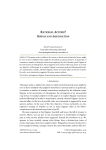
Rational actors? Hippias and Aristogeiton
Статья научная
This paper seeks to address the extent to which ancient historical actors might be seen to have exhibited what might be described as rational motives. In particular, it examines a number of strategic interactions employed by the Athenian tyrant Hippias in his interactions of Aristogeiton, the protagonist of an unsuccessful coup d’etat . A secondary objective of this paper is to explore Hippias’ reactionary policies following his brother’s assassination, namely, whether Hippias’ choice of external allies, in the face of possible exile, were irrational as suggested by some ancient authors.
Бесплатно
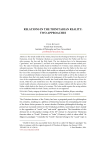
Relations in the Trinitarian reality: two approaches
Статья научная
The Greek model of the Trinity, based on the Theological Orations of Gregory of Nazianzus, treats the Trinitarian relations as connections between the Father and the two other persons: the Son and the Holy Spirit. The two relations have to be heteronymous (“generation” and “procession”), and have to be interpreted from the extreme realistic position. The Latin Trinitarian model, based on Boethius’ De Trinitate, treats relations as three subsistent persons. The relations have to be unidirectional: from the Father to the Son, and from both of them to the Holy Spirit. Both models are adequate and effective, but incompatible. One of the consequences of this incompatibility is the problem of filioque: the introduction of an additional relation of procession into the Greek model as well as the exclusion of this relation from the Latin model result in the inadequacy of the models. From the point of view of the complementability of a model, the Greek model allows introduction of new ele-ments, while the Latin model does not. The soteriological consequences are such that the Greek model welcomes a human person to establish a unique relation with the person of the Father, which leads to the theosis of a creature. The Latin model requires the saving relation to be established with the whole Trinity, and theosis is not supported.
Бесплатно
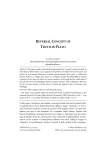
Reversal concept of truth in Plato
Статья научная
The paper provides a historical background for the “reversal” concept of truth. In Attic drama, Plato found a way to approach the problem of conflict between the good and justice. By overcoming deficiencies of tragic representations, Plato came to understand human reality as a complex plot, prone to a complete change. His philosophical solution consisted of two steps: the birth of a proper narrative of the good and the verification of this narrative by a corresponding common narrative of justice. This verification is the basis for the reversal concept of truth, traces of which are operative also in Descartes and Heidegger.
Бесплатно
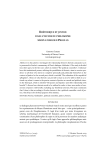
Rh'etorique et justice dans l’oeuvre du philosophe n'eoplatonicien Proclus
Статья научная
In this article, I investigate the relationship between rhetoric and justice as it is presented in Proclus’ commentary of Plato’s dialogue Alcibiades I. The study is divided into three parts. In the first one, which is entitled “The political counsellor”, I elaborate how this institutional person, utilizing the possibilities of rhetoric, aims to exercise prudence to all those who intent to complete personally and politically themselves in the context of justice. In the second part, which is entitled “The refutation of the superficial syllogisms”, I focus on what rhetoric can provide to man so as to be able to think in a rational way when it comes to the precise content of justice as a moral and political virtue. In the third part, which is entitled “The justice and injustice and their relationship with benefit”, I discuss how rhetoric needs to be utilized in order to have new modes of connection of justice with benefit, excluding any beneficial criterion. The main conclusion that I draw is that according to Proclus rhetoric is for a political counsellor a tool of justice, which has to be the final purpose of his mission.
Бесплатно
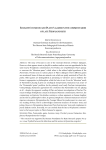
Socrates’ humour and Plato’s games in the commentaries of late Neoplatonists
Статья научная
The irony of Socrates is one of the essential elements of Plato’s dialogues. However, what appears ironic or playful to modern readers, was not apprehended in the same way by Neoplatonic commentators. For Proclus, one of problematic Plato’s passages concerns the “laborious game,” which refers to the refined eight hypotheses of the Parmenides. Proclus turns to various places of Plato’s dialogues where different games are mentioned. Some of them are mimetic arts, which are partly restricted in Plato’s Republic. Other games are distinguished as pertaining to “old men” and to children: the former is appropriate to philosophers, while the latter is not. Even the “laborious” mode of Parmenides’ playing is given an ontological interpretation. Damascius was aware of the “Parmenides’ game” problem, but he primarily used ready Proclean interpretation. Unsurprisingly, Damascius approaches the conclusion that Parmenides was not playing at all — despite the apparent wording of Plato and minute investigations of Proclus. The extant writings of Simplicius contain no dedicated Platonic commentaries. However, the commentary on Epictetus’ Enchiridion contains a verbose argument on human laughter and its role in a philosopher’s ethos. In general, Simplicius continues Damascius’ trend of rigorous seriousness. Olympiodorus the Younger follows his predecessors in a mere serious reading of Plato, but he acknowledges numerous instances of Socrates’ irony and joking. However, Olympiodorus dissociates Plato from Socrates’ irony and emphasises its purely didactic extent. Generally, we can conclude that the later a Neoplatonic commentator is, the less perceptive to Plato’s humour he appears.
Бесплатно
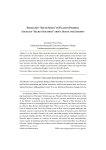
Socrates’ “swan song” in Plato’s Phaedo. Socrates' “secret doctrine” about death and eternity
Статья научная
In the Phaedo Plato describes Socrates’ final moments, just before his death. The statements he then makes can be treated as his philosophical creed. Socrates compares his own words to a swan song sung by the creature right before its approaching death and reminds his listeners of the swans’ prophetic gift. It can be said that in his final hour Socrates, just like Apollo’s swan, sings a song about the immortality of the human soul. Socrates refers to the Orphic “secret doctrine” (although he does not mention their name directly), revealing his thoughts on his own fate after death.
Бесплатно
Sources of fragments by the iconoclastic patriarch John Grammaticus (837-843): Leontius of Byzantium
Статья научная
This article analyzes two fragments by the last Iconoclastic Patriarch John Grammaticus (837-843). A number of parallels to the doctrine in the fragments have been identified, including Aristotle, Theodoret of Cyrrhus, Basil of Caesarea, and John Philoponus. It is proposed that the main source of the fragments was a passage from the Epilyseis or Solutions Proposed to the Arguments of Severus by Leontius of Byzantium.
Бесплатно
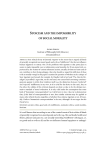
Stoicism and the impossibility of social morality
Статья научная
Stoic ethical theory is famously “rigorist” in the sense that it regards all kinds of generally recognized non-moral goods and evils as “indifferents” that do not influence human happiness or misery. One of the problems with rigorism is that prima facie it seems to make impossible even a rudimentary social morality, for if non-moral evils, experienced by the victims of various inhumane actions, actually do them no harm and do not contribute to their being unhappy, then why should we regard the infliction of these evils as morally wrong? In this paper I examine the question of whether such a critique of Stoic rigorism (put forward, for example, by Claudia Card in her book “The Atrocity Paradigm”) is justified. I argue that, on the one hand, one cannot find convincing counterarguments against it within Stoic tradition itself (e.g, the distinction between “preferred” and “rejected” indifferents, in my view, is of no avail for the Stoics in this case), but, on the other, the validity of this criticism depends on what we take to be the ultimate normative standard of moral evaluation. It is only valid under the assumption that some kind of “humanistic consequentialism” (as I call it here) is true. I also try to demonstrate that, if this kind of consequentialism is true, then similar criticism may be applied to many other ethical theories regardless of whether they endorse rigorism or not. (Personally, I believe “humanistic consequentialism” to be true, although I do not argue for this thesis here).
Бесплатно
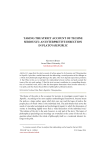
Taking the strict account of techne seriously: an interpretive direction in Plato’s "Republic"
Статья научная
I argue that the strict account of techne agreed to by Socrates and Thrasymachus in Republic I provides a useful framework for addressing a central question of the dialogue as a whole: how philosophy might belong to the polis. This view depends upon three positions: 1) that Plato invites us to interpret the relationship between techne and polis outside the terms of the city-soul analogy, 2) that the strict account contributes to a compelling description of vocational work, and 3) that this description determines what Socrates means by a true polis, and thus frames the problem of philosophy’s political inclusion.
Бесплатно
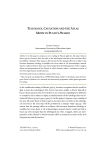
Teleology, causation and the atlas motif in Plato's Phaedo
Статья научная
In this paper, I propose a new reading of Phaedo 99b6-d2. My main thesis is that in 99c6-9, Socrates does not refer to the teleological aitia but to the aitia that will be provided by a stronger ‘Atlas’ (99c4-5). This means that the passage offers no evidence that Socrates abandons teleology or modifies his views about it. He acknowledges, instead, that he could not find or learn any aitia stronger than the teleological one. This, I suggest, allows an interpretation of the Phaedo in which Socrates offers a consistent account of the aitia of generation and destruction.
Бесплатно
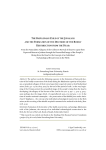
Статья научная
The author reveals the following sequence in the formation of the Jewish doctrine of the bodily resurrection of the dead: during the Babylonian captivity of the Judaeans, a naturalistic allegory of their revival upon their expected return to their Motherland arises (Ezek. 37:1-14, Isa. 26:19, 41:14); by the end of the period of exile / at the very beginning of the Persian period, the personified image of the people’s rising from the dead is developing (the allegory of the Servant of the Lord in Isa. 42:1-9, 49: 1-7, 50:4-9, 52:13-53:12; perhaps also the image of Job, cf. especially: Job 19:25-27a and 42:5, 7-17). In the time of another national catastrophe - the persecution of the faithful Jews under Antiochus IV Epiphanes - the concept of an individual eschatological resurrection in the flesh arises; at this receiving of the afterlife requital is assumed to be realized in the body (Dan. 12:1b-3, 13).
Бесплатно
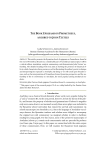
The Book epigrams on Prometheus, ascribed to John Tzetzes
Статья научная
This article presents the Byzantine book of epigrams on Prometheus, found at the end of Prometheus Bound in a considerable part of Aeschylean manuscripts. It offers a critical edition, translation, analysis, commentary, and demonstrates John Tzetzes’ authorship. The detailed reading of the text aims at showing the presence of theatrical effects which characterise these poems, as well as illustrating the author’s poetic technique and interpreting his reproach to Aeschylus. By doing so we will touch upon broader issues, such as the interpretation of Prometheus from a Byzantine perspective and the authorship of the A-commentary on Aeschylus, the most popular among mediaeval students.
Бесплатно
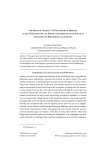
Статья научная
The paper deals with the topic of secrecy of the philosophical message in the VII Letter of Plato. The theme suggests spiritual contexts close to the Greek Mysteries, because the secrecy was one of the key elements of Greek Mysteries, especially Eleusinian and Orphic ones, which played a special role in the formation of Greek philosophy.
Бесплатно
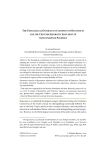
Статья научная
The theological contribution of Leontius of Byzantium played a crucial role in adapting the notions of substance and hypostasis from their original Trinitarian to a Christological context. The Leontian concepts, such as enhypostasized substance, distinction between the principle of substance and mode of existence, as well as “relational” ontology of reversed unions and distinctions at the levels of substances and hypostases was adopted by Maximus the Confessor and John of Damascus in their polemical application of Neo-Chalcedonian Christology, as well as the by the Iconophiles of the Second Iconoclasm in support of the circumscribability of Christ.
Бесплатно
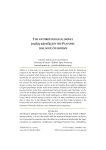
The anthropological model in the Platonic dialogue Charmides
Статья научная
In this study we investigate the extract 154b8-156c9 from the introductory chapters of the Platonic dialogue Charmides so that to examine how the terms of Aesthetics are formed, which focuses on the selfhood and makes it the core of dialectics. Specifically, we structure our study in two chapters each of which includes two subchapters. In the first subchapter we focus on the soul, which in the Platonic text appears to be the criterion for moral perfectness. In the second subchapter, which systematizes the former, we show how Socrates contrives to do the transition from subjective judgments to logical propositions and the terms of the authentic Aesthetics. In the third subchapter, paying attention to the first communication between Socrates and Charmides, we discuss how the Athenian philosopher sets beauty within its true boundaries and activates the logical part of the soul. In the fourth subchapter, we follow the introduction in dialectics, which will lead anyone involved in truth. The main contribution of our study is that we show how in this dialogue Plato succeeds to go from vulgar hedonism to the beauty of the soul, which is a requirement for the inner transformation of selfhood.
Бесплатно
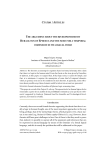
Статья научная
The theories accounting for cognition based on formal schemata often claim that there is a logic in the human mind. From the thesis on the river given by Heraclitus of Ephesus, in this paper, it is argued that, if that logic exists, it cannot be simple, and that, at a minimum, it requires the assumption of some kind of temporal elements, which, in general, seem not to be considered in such theories. In particular, some reflections about possible ways those elements could be taken into account are presented.
Бесплатно
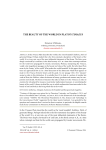
The beauty of the world in Plato’s "Timaeus"
Статья научная
In the Timaeus Plato describes the world as the ‘most beautiful’ ( kallistos, 29a5) of generated things. Perhaps indeed this is the first systematic description of the beauty of the world. It is, at any rate, one of the most influential statements of the theme. The Stoics were deeply convinced by it and later, in the third century A.D., at a time when contempt and hate for the world were propagated by Gnostic movements, Plotinus, interpreting the Timaeus, would write magnificent passages on the beauty and value of the world. But what does Plato mean by the ‘beauty’ of the world? What makes the world beautiful? In this paper these questions are approached first (1) by a brief discussion of the distinction which Plato appears to make in the Timaeus between beauty and the good. In one passage ( Tim. 87c) ‘measure’ seems to relate to this distinction. It is suitable then (2) to look at a section of another late work of Plato, the Philebus, where the themes of beauty, goodness and measure may be compared in more detail. The theme of measure then takes us back (3) to the Timaeus, in order to examine the role played by measure, in particular mathematical measure, in constituting the beauty of the world. I discuss in detail the way in which mathematical structures make for the beauty of soul and body in the living whole that is the world.
Бесплатно
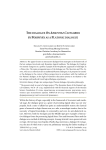
The dialogue on Aristotle categories by porphyry as a platonic dialogue
Статья научная
The paper focuses on interactive dialogue-form strategies in the framework of the late antique Greek and early Byzantine logical traditions. The dialogue by Porphyry On Aristotle Categories is a perfect example of the Neoplatonic approach to build logic in a Plato style. The main protagonistresses of the dialogue are The Question and The Answer, who act as collocutors do in traditional Platonic dialogues. It is proposed to consider the dialogue in the context of three perspectives: in accordance with the tradition of the Platonic dialogue; in the light of Aristotle's education system; in its relation to the late antique and medieval Greek logical dialogue experiments.
Бесплатно
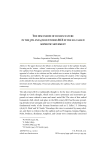
The discussion of human nature in the 5th and 4th centuries bce in the so-called sophistic movement
Статья научная
The paper discusses the debate on the human nature in the sophistic thought. Focusing on the "nature - culture" controversy it presents the evolution of the views of the sophists: from Protagoras’ optimistic contention of the progress of mankind and his appraisal of culture to its criticism and the radical turn to nature in Antiphon, Hippias, Trasymachos, and Callicles. The paper aims at presenting the analysis of the ongoing discussion, with the stress laid on reconstruction of the arguments and concepts as well as the attitudes that are associated with various positions of this debate.
Бесплатно
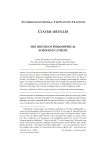
The houses of philosophical schools in Athens
Статья научная
In the first and second parts of the article we look at two archaeological sites excavated in the center of Athens, a building, located on the Southern slope of the Acropolis and now buried under the Dionysiou Areopagitou Street, known as House Chi, or the “House of Proclus”, and Houses A, B and C at the slope of the Areopagus overlooking the Athenian Agora. We outline and illustrate the basic finds and reexamine the principal arguments in favor of identifying these constructions as the houses of philosophical schools and, in the third part of the paper, offer a remark on religious practice in the Neoplatonic school.
Бесплатно

